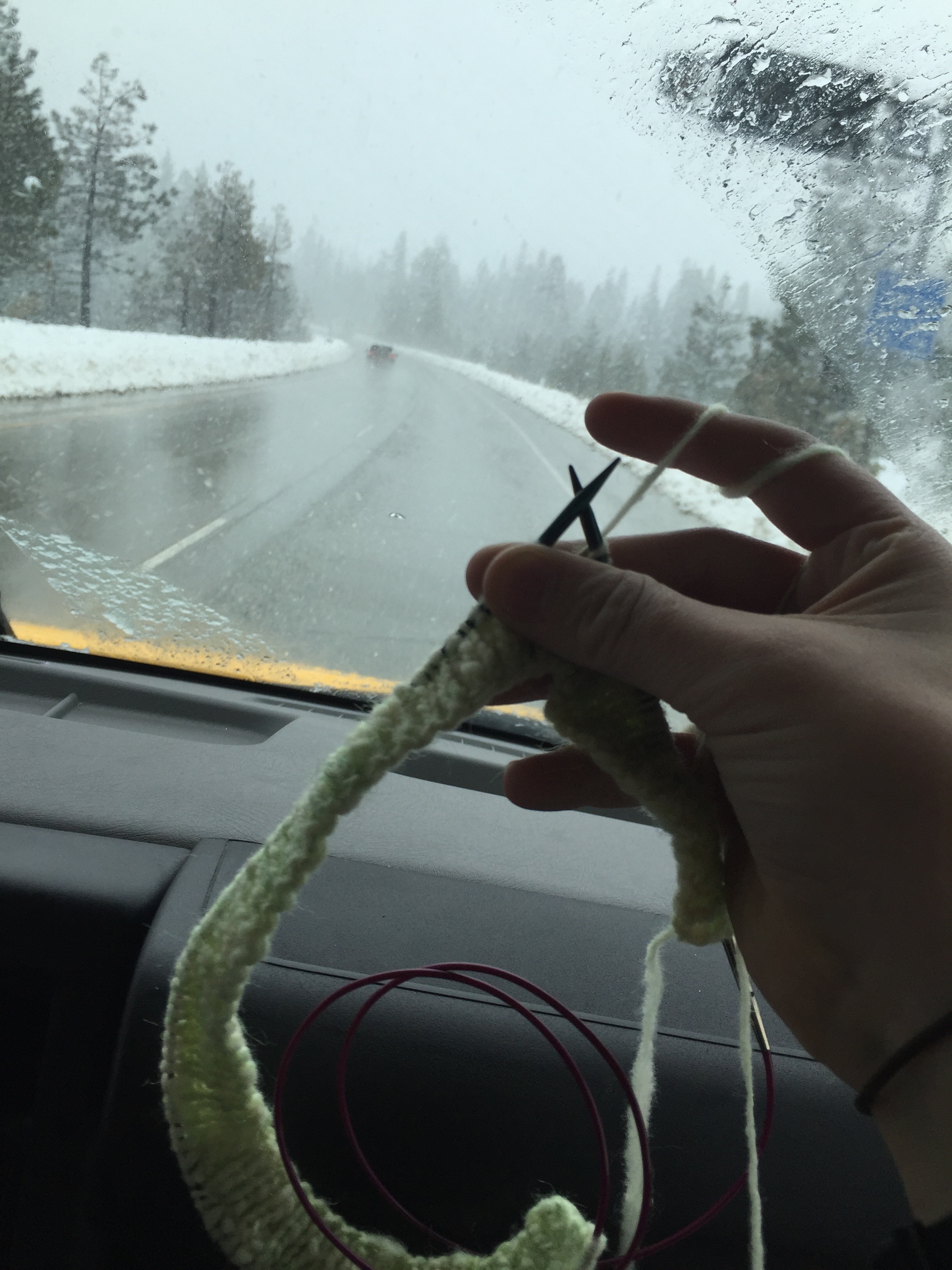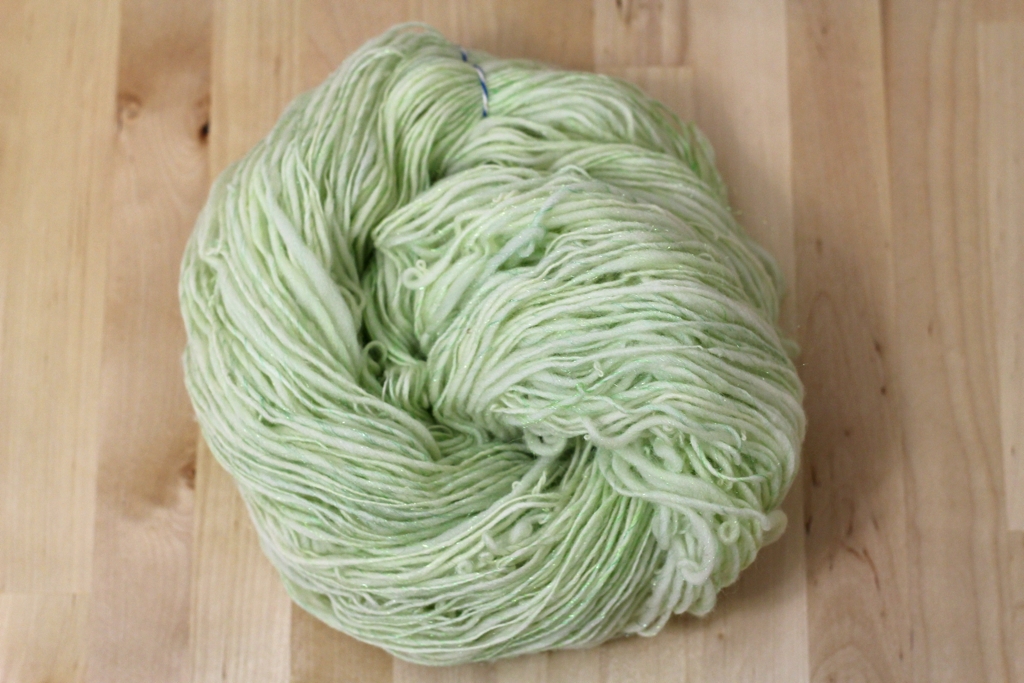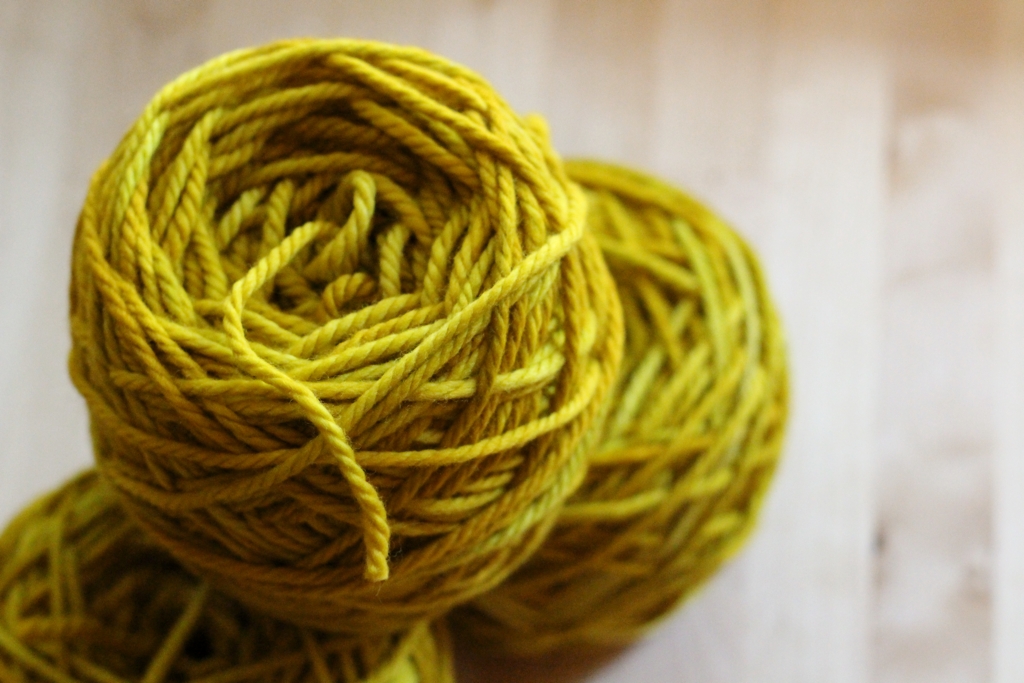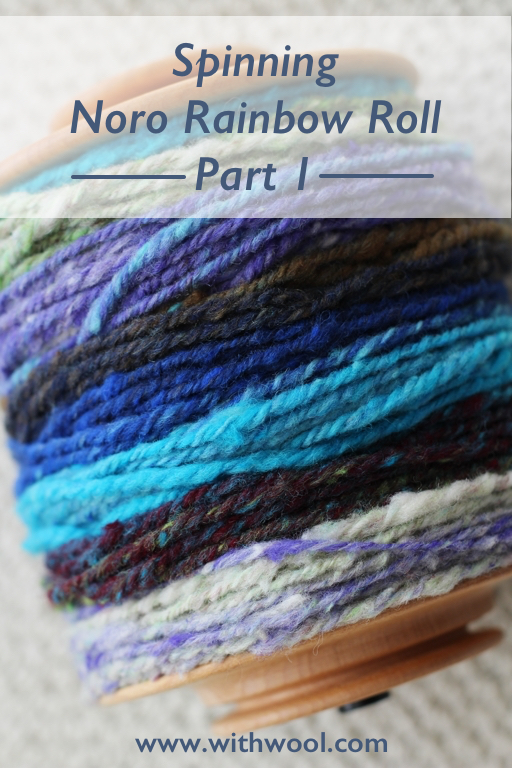The numbers of my test are all over the place with one skein losing just 3.6% of its yardage and another losing 16.8%. What’s the same across the board though is that all 4 of the skeins “shrunk”. The skeins that lost the most yardage were plied which points to plying twist as the main force behind the change. Another possibility is that I simply wound the skeins too tightly around the swift and they relaxed to a much smaller circumference. There’s no way my yardage counts would have been correct if that’s the case.
Realistically, it’s probably a bit of both. I haven’t done the best job of always loosely winding my skeins. Some I couldn’t put them back on the swift if I tried. I’m not saying this to discount how setting the twist changes the plying. Finishing a yarn affects its surface, diameter, final twist, workability, and, yes, even yardage.
I wish I could just give you a formula to estimate how much a skein will “shrink” after setting the twist. That’s just not possible. I spun all 4 of those skeins in a week, 3 with similar methods, and none of them lost a consistent amount compared to another. Calculating how yardage changes after setting the twist is something that has to be done on a skein by skein basis. But is it worth doing every time? Probably not.
So, what’s a spinner to do?
Wind skeins loosely. Plied yarns with high twist are going to be stretchier than skeins with less twist. You’ll get a better estimate of yardage this way.
Don’t take the measured yardage before setting the twist as a definite number. It’s a high estimate.
Spin a sample. I’ll admit that I don’t do this but I’m usually not spinning for than 4 oz at a time or for a particular project. Sampling before before spinning a large quantity or because you want to make a specific kind of yarn lets you test your methods and figure out how much you need to spin.
Spin more than you think you need. You might need those extra yards.
When you’ve finally work with that one precious skein of handspun, pick a pattern that calls for less yardage than you have. This is assuming that you haven’t measured the yardage after setting the twist. Plus, there’s less chance you’ll run out of yarn 6” before binding off the last stitch.
If you’re working with a lot of yardage, it might be worth using a McMorran Balance or a scale instead of counting wraps. Either device would let you calculate yardage by weight instead of relying solely on wraps and skein circumference.

































































































